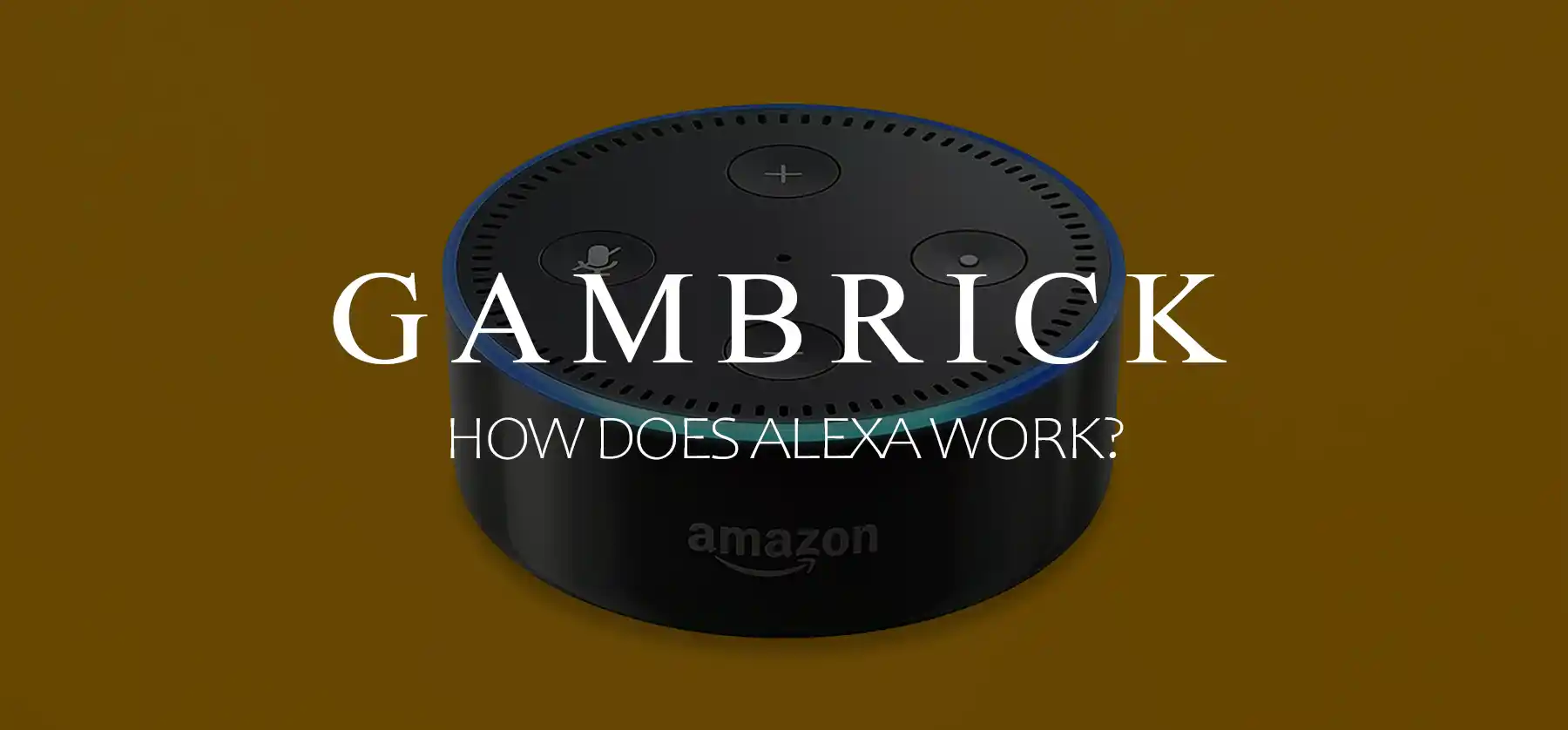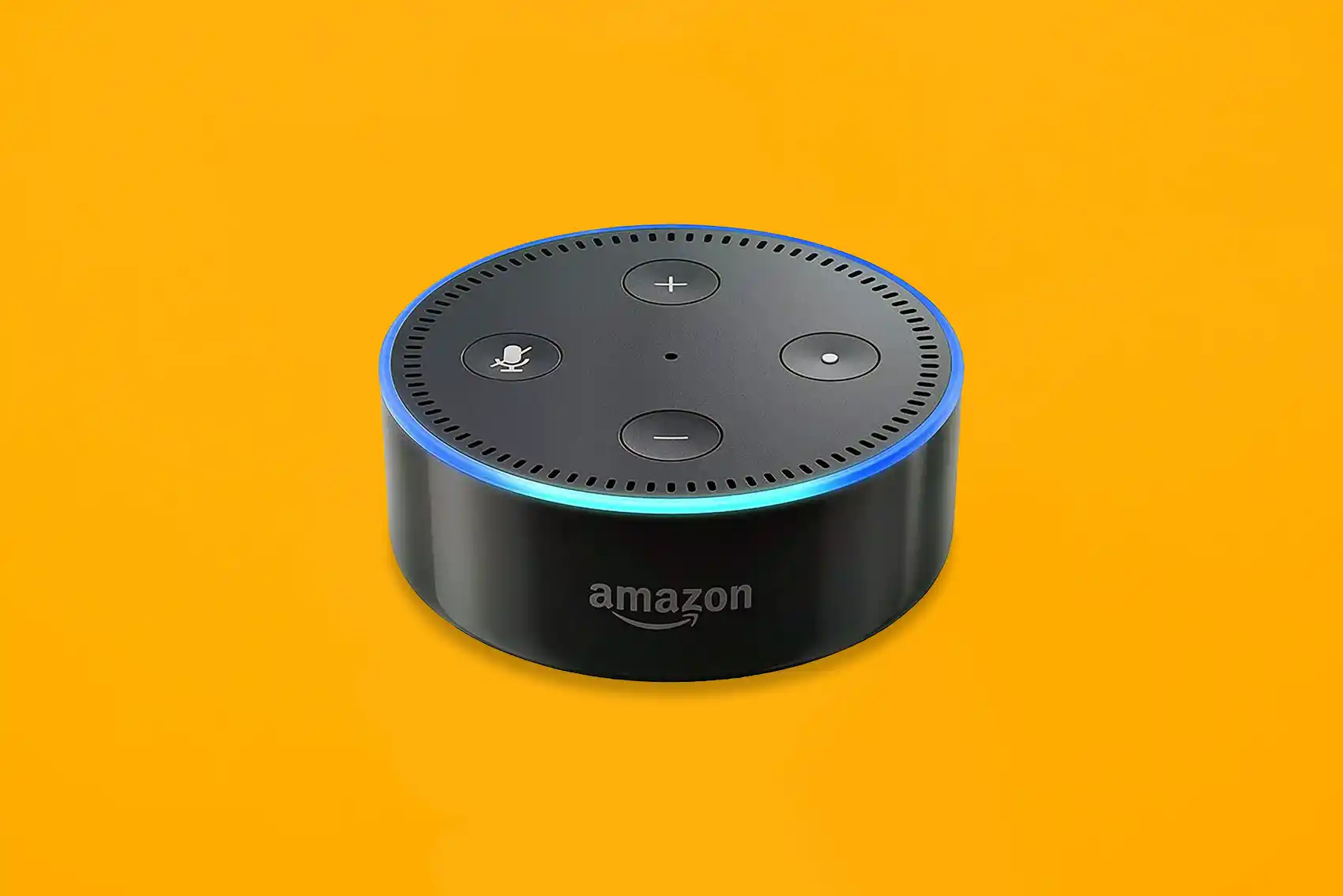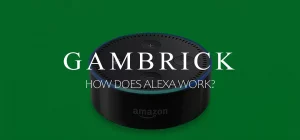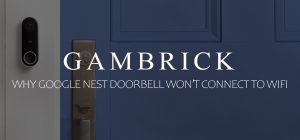
How Does Alexa Work?
Amazon Alexa works through a combination of sophisticated technologies, including cloud computing, natural language processing (NLP), and machine learning (ML). Alexa’s ability to understand and respond to human commands starts with the detection of the “wake word.” Alexa is designed to constantly listen for this trigger, using small, dedicated processors within the device. This ensures that the system is always ready for user commands, while also maintaining user privacy by only beginning to record after the “wake word” is heard.
Upon activation, Alexa records the user’s voice command and promptly sends this audio clip to Amazon’s cloud servers. What follows is a remarkable demonstration of NLP at work. Speech is converted into text, allowing the system to process and understand the human language in its textual form. This stage accommodates various languages and dialects, highlighting the system’s versatility.
The crux of the operation lies in deciphering the user’s intent. Through advanced ML algorithms, the system delves into the semantics of the request. It can navigate through colloquial language to determine the appropriate response or action. This understanding guides Alexa’s subsequent actions, whether that involves sourcing information, interacting with smart home gadgets, or setting up reminders.
Execution of the command is the next phase. For questions seeking factual information, Alexa consults its internal databases or browses the internet. If the request involves media playback or news, it integrates with third-party services. For smart home interactions, commands are relayed over the internet to the respective devices.
The final, ongoing stage of Alexa’s operation is its learning process. Using machine learning, Alexa refines its understanding and responses over time. It analyzes previous interactions to enhance accuracy and predict user needs in future engagements.

How Alexa Works Step By Step
How Alexa works basically breaks down into 3 phases, the Wake Word, Invocation Name, and Utterance. These elements work sequentially to create a smooth, responsive experience, akin to conversational dynamics with a human assistant.
- Wake Word: The interaction begins with the user prompting Alexa with a specific ‘Wake Word,’ most commonly, ‘Alexa.’ This verbal cue shifts the device from a passive state to an active listening mode.
- Invocation Name: Next in the sequence is the ‘Invocation Name,’ a specific keyword that activates a particular Alexa ‘skill.’ These skills, akin to applications for voice-operated platforms, require a direct prompt, often combined with a specific query or command. For instance, users might say, “Alexa, open Daily Horoscope” to initiate a skill that provides horoscope readings.
- Utterance: The ‘Utterance’ constitutes the specific phrase or command issued by the user. For example, saying ‘Taurus’ after initiating a horoscope skill is an utterance. Alexa’s system analyzes these verbal cues, extracting the user’s intent to generate an appropriate response or action. The utterance is the directive that shapes Alexa’s ensuing activity. It translates the user’s verbalized desire into a specific, executable task.
Upon receiving the user’s structured command, Alexa relays this information to the cloud-based Alexa Voice Service (AVS). AVS delves into intricate tasks, employing Automatic Speech Recognition (ASR) and Natural Language Understanding (NLU) to understand the user’s request.
The brilliance of AVS lies in its ability to process the user’s intent. If the request necessitates external intervention, AVS facilitates a web service request to a third-party server. This seamless backend communication allows Alexa to fetch, process, and deliver the information or service the user seeks.
What’s Needed For Alexa To Work?
To use Alexa, Amazon’s virtual assistant, several prerequisites are necessary. First and foremost, an individual needs an Amazon account. This serves as the primary gateway to access Alexa’s features. Alexa is free and accessible to all Amazon account holders with no requirement to subscribe to Amazon Prime.
The setup process starts with the Alexa app, available on various platforms. Users must sign in using their Amazon account credentials.
Within the app, navigation is relatively straightforward. Users can tap on the “More” option, typically located in the lower right corner of the interface, leading to a selection menu.
One of the critical options in this menu is “Add a Device.” This feature is integral to customizing the user’s experience, allowing the addition of a plethora of Alexa-compatible devices to one’s ecosystem. The range of compatible devices is extensive, spanning various categories from smart lights and thermostats to smart plugs, all unified by their ability to communicate with Alexa.
By linking these smart devices, users enable a centralized control hub within the Alexa app, transforming it into a digital command center for their smart home or office ecosystem.
Each added device syncs with Alexa, providing users with the convenience of voice-activated controls and seamless integration of multiple device functionalities.
Operating Alexa requires an Amazon account, the Alexa app, and the subsequent addition of Alexa-compatible devices via the app. This setup empowers users to orchestrate a symphony of smart devices through simple voice commands, enhancing everyday convenience.
Does Alexa Work Without WiFi?
Alexa, as a cloud-based service, relies heavily on an internet connection to perform most of its functions. Without Wi-Fi or a mobile data connection, Alexa’s ability to process and respond to commands is significantly limited. Here’s what happens when Alexa goes offline:
- Limited Functionality: Without the internet, Alexa cannot access its cloud-based databases or external web resources. This limitation means it can’t answer queries that require looking up information, streaming media, controlling smart home devices remotely, or accessing online services.
- Local Processing: Some Alexa devices may support basic local voice control, allowing you to interact with connected smart home devices. This feature means you could potentially still use voice commands to control things like smart lights and thermostats within your home network, provided these devices do not require an internet connection themselves and that local voice control is enabled.
- Loss of Advanced Features: Advanced features like drop-in, announcements, shopping, and anything that requires communication to Amazon’s servers will not work without an internet connection.
- Stored Media and Data: If your device has the capability to store media (like music files) or data locally, you may still be able to access these without an internet connection, depending on the device’s design and functionality.
While Alexa requires the internet for the majority of its functionality, some very basic operations may still be available offline. However, for a full and rich user experience, a stable internet connection is essential.
How Does Alexa Work For Music?
Alexa plays music through a combination of voice recognition, internet streaming, and integration with various music services.
Here’s a breakdown of how Alexa processes and executes a request to play music:
- Voice Command Recognition: When you give Alexa a command related to music, such as “Alexa, play jazz music,” the device recognizes your voice command and the wake word “Alexa” activates the listening mode.
- Command Interpretation: The servers use automated speech recognition to convert your spoken words into text, and natural language understanding to interpret the text and determine your request.
- Music Service Integration: Once Alexa understands the request, it communicates with pre-set or default music services linked to your Amazon account. These could be Amazon Music, Spotify, Apple Music, Pandora, and others, depending on your subscriptions and preferences set in the Alexa app.
- Streaming: After determining the music service and the type of music requested, Alexa streams the music directly from the service over the internet. The process involves fetching the digital audio files from the music service’s servers and playing them through the speakers of your Alexa-enabled device.
- Control Commands: While music is playing, you can ask Alexa to perform various control functions. These includs adjusting the volume, pausing the song, skipping to the next track, or stopping the music altogether.
- Personalization: Based on your requests and feedback (like “Alexa, I like this song”), Alexa learns your musical preferences using machine learning algorithms. This information helps the system make more informed decisions when selecting songs, albums, or playlists for you in the future.
Alexa’s ability to play music is a coordinated process involving voice recognition, cloud-based processing, integration with music streaming services, and adaptive learning, all working together to provide a seamless listening experience.
How Does Alexa Control a TV?
Alexa’s integration with television sets is part of the broader ecosystem of smart home control and automation. This integration allows users to use voice commands to control their TVs for a hands-free and intuitive viewing experience.
Here’s how it works:
- Compatibility and Setup: Firstly, the TV must be smart or connected to a smart device (like Amazon Fire TV, certain game consoles, or smart TV sticks) that is compatible with Alexa. Users need to link their TVs to the Alexa app. This involves logging into the Amazon account, selecting the appropriate TV or device from the list, and following the on-screen setup instructions, including giving the device a recognizable name.
- Voice Command Recognition: When a user issues a command related to the TV, such as “Alexa, turn on the TV” or “Alexa, play ‘The Crown’ on Netflix,” the Alexa-enabled device captures this voice command.
- Command Processing: Alexa’s cloud-based system interprets the command, breaking it down using natural language processing to understand the specific request. It determines not only the basic function (e.g., power on, volume control, channel navigation) but also content-specific demands (like launching a particular app or playing a specific show).
- Executing the Command: Once Alexa understands the request, it communicates with the compatible TV or connected smart device through the home’s Wi-Fi network.
- Feedback and Control: The TV or connected device executes the command, and the action takes place. This could be anything from changing a channel, adjusting the volume, playing content, or even accessing specific apps like Netflix, Hulu, or Amazon Prime Video.
- Advanced Features: Some setups also allow for more advanced controls, like searching for shows or movies across multiple apps, displaying additional information about content, or even controlling other smart home devices from the TV’s interface.
How Does Alexa Work With iPhone?
To use Alexa with an iPhone, users must first download the Alexa app from the Apple App Store. Post-installation, the app requires users to sign in with their Amazon account, linking Alexa their smartphone. This integration means that users can now interact with Alexa just as they would with an Echo device. You can issue voice commands to set reminders, ask questions, or control smart home devices, all directly from an iPhone.
The Alexa app serves as a command center for controlling all your Alexa devices. Whether it’s adjusting lighting, checking security cameras, or manipulating thermostats, the app brings comprehensive home automation to your fingertips.
Alexa can also can play music from linked accounts, provide news updates, and even facilitate shopping on Amazon.
One of the standout features of this integration is the ability for users to trigger Alexa hands-free. By merely saying the wake word “Alexa,” users can activate the assistant without physically interacting with their iPhone.
While Alexa on the iPhone can perform many of the same tasks as a dedicated Echo device, certain functionalities may be limited or differ slightly due to hardware and software differences between the devices.
How Does Alexa Control Lights?
Alexa’s interaction with smart lighting hinges on the interconnectedness of smart devices, cloud-based platforms, and voice recognition technology. Each is designed to respond intuitively to the user’s verbal commands.
The foundational step involves setting up smart lights. Bulbs, switches, or outlets that possess internet connectivity and the capability to communicate with Alexa can all be used.
These smart lighting components need to be installed within the home, replacing traditional bulbs or switches. They’re then synchronized with the home’s Wi-Fi network.
Post-installation, users are required to link these smart lights with the Alexa ecosystem via the Alexa app. The process includes adding lights as new devices and assigning them to specific groups or naming them for easy identification. For example, “kitchen lights” or “bedside lamp.”
Once this network of smart lights is integrated with Alexa, the system is primed for voice-activated control. When a user issues a command like “Alexa, turn on the living room lights,” the voice command is captured by an Alexa-enabled device and transmitted to Amazon’s cloud servers.
Here, sophisticated algorithms decipher the command’s intent and then communicates it back through the network to the designated smart lights, triggering the requested action.
The beauty of Alexa’s integration with smart lighting is not just in on-and-off switches. Users can adjust brightness levels with statements like “Alexa, dim the lights to 50%,” or even change colors if their bulbs have that feature. For example, you can say “Alexa, change the lights to blue.”
Some advanced setups even allow for programming routines or schedules. This enables the lights to power on gradually to simulate sunrise or switch off automatically at bedtime.
If you have any questions about Alexa, email or leave a comment below.

John Mazzuca | About | More Posts |
Custom Home Builder
John Mazzuca is a custom home designer and builder at Gambrick with over 25 years experience in the construction industry. John has designed, built and/or remodeled hundreds of homes, small buildings, and commercial projects. He writes about business, real estate, home building, and household electronics. His work has been featured in Fox Business, Better Homes & Garden, House Beautiful, and more.




















